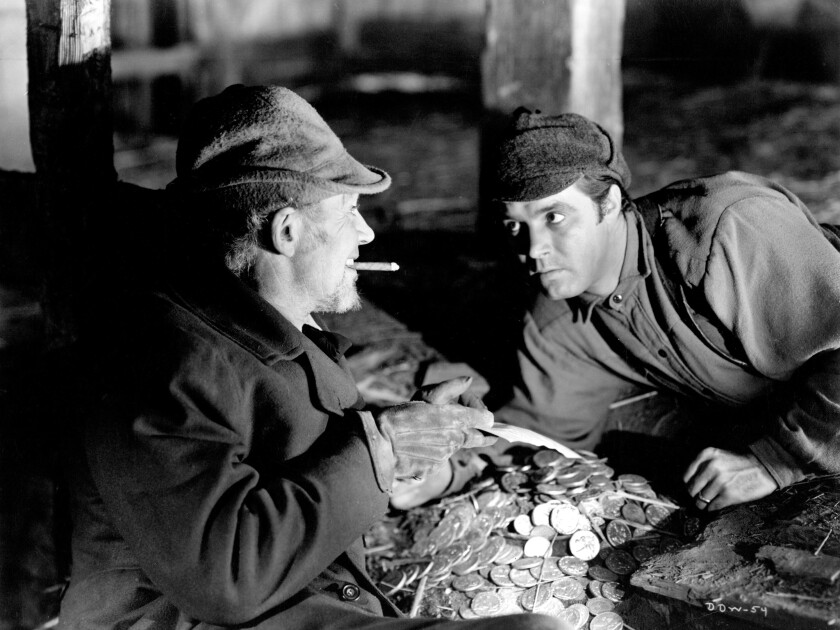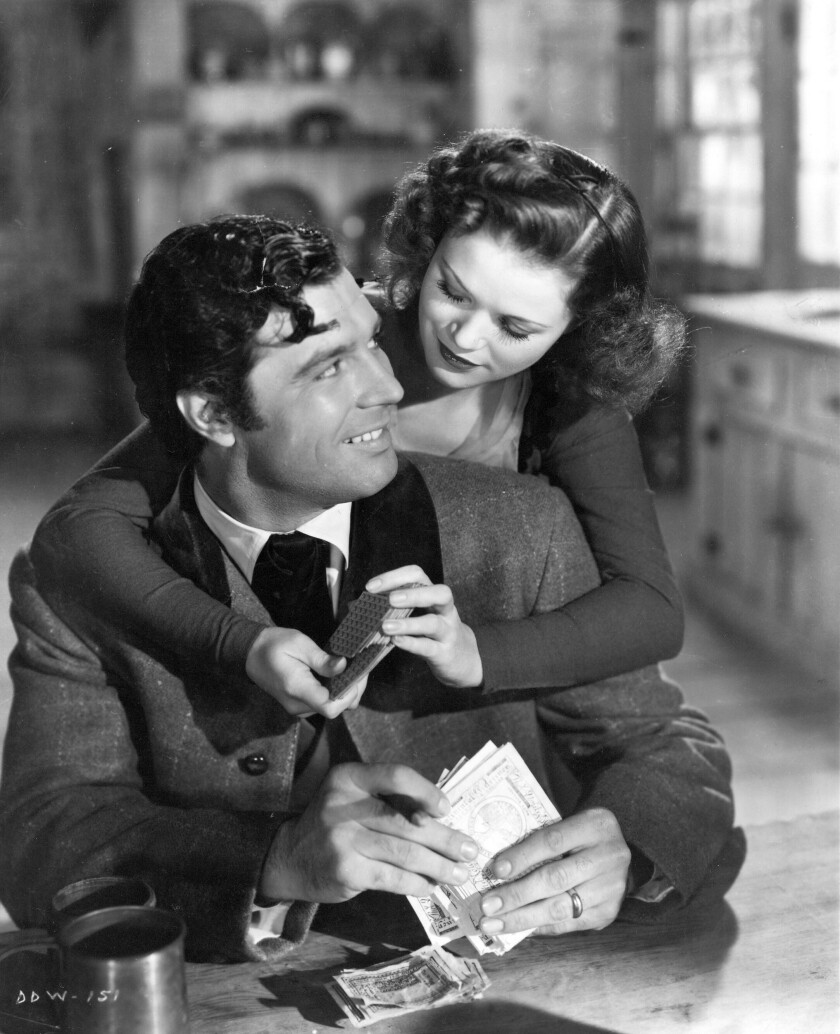Must-see films at 2022 UCLA Festival of Preservation
Just when I believed I was out, they pull me again in.
No, as opposed to Al Pacino in “The Godfather III,” I’m not a distraught Mafioso pulled back again into a lethal lifestyle of crime, I’m a disconnected movie critic pulled back into the environment of deadlines by just one of the terrific enjoys of my qualified life: UCLA Film & Tv Archive’s Competition of Preservation.
Now firmly ensconced at the Billy Wilder Theater at the Hammer Museum, the festival returns the weekend of Might 20 to 22 with 1 key new twist. Thanks to a reward from an anonymous donor, all of its showings are totally free of charge (although reservations are hugely suggested).
Now in its 20th version, the festival is still at its main — as Chatting Heads would have it — exact same as it ever was. Time and once more, no motion picture party in Los Angeles has psyched me more than this a person, and this hottest iteration is no exception.
The festival’s purview is legendarily vast, so a great deal so that anyone who cares about movie will find their taste catered to this yr, no matter if it’s the Harold Lloyd-Preston Sturges collaboration “The Sin of Harold Diddlebock,” a tribute to Betty White, Laurel and Hardy’s “Scram!” or the Cockettes’ anarchic “Tricia’s Wedding.”
The festival not only showcases the restoration of classic films to pristine affliction, it delights in shining a light-weight on concealed gems and sudden corners of the cinematic universe, products you experienced no strategy existed, allow by yourself envisioned to ever see on a significant display.
An 8-moment scenario in level this calendar year is 1938’s “Buzzy Boop at the Live performance,” a wild and crazy Fleischer Studios cartoon showcasing Betty Boop’s uninhibited region cousin Buzzy.
A person of only two shorts Buzzy appeared in and unseen for 85 several years, this nifty item resulted from an unpredicted collaboration in between UCLA, Paramount Pics and Gosfilmofond, the Russian movie archive the place a print was identified in 2019.
However I like the whole preservation occasion, I’m especially fond of the return to initial glory of black-and-white movies from Hollywood’s Golden Age.

Walter Huston, left, and James Craig in 1941’s “All That Money Can Buy” directed by William Dieterle.
(RKO / Photofest)
Two films particularly caught my eye this year, together with the festival’s opening night attraction, 1941’s “All That Dollars Can Obtain,” far better acknowledged by its alternate title “The Satan and Daniel Webster,” a name that was altered out of concern that audiences would confuse it with the before “The Devil and Skip Jones.”
Directed by William Dieterle, primarily based on a quick tale by screenwriter Stephen Vincent Benet and featuring an Oscar-successful score by the protean Bernard Herrmann, “Money” is established in the 1840s in the hardscrabble New Hampshire-Massachusetts borderlands.
Farmer Jabez Stone (James Craig) is owning a heck of a time remaining solvent. Sadly for him, Mr. Scratch, a.k.a. the satan himself (an insinuating Walter Huston at his darkish, cackling very best), just happens to be in the community, and right before you can say “sign listed here in blood,” he has produced a deal for the farmer’s soul.
Specials with the devil have a practice of turning out poorly, but Jabez is privileged to have the good populist orator and legislator Daniel Webster (Edward Arnold) on his side. A treatise on human frailty, greed and the probability for redemption, “Money” manages to be both of those literary and unfailingly energetic.
If you want to see Hollywood star power in action, you could not do superior than a further black-and-white gem, 1949’s “Force of Evil,” with John Garfield in the main purpose.
Co-written by Abraham Polonsky in his directing debut, “Evil” casts Garfield as an up-from-poverty New York attorney. He’s the sort of male who retains a top secret phone in a locked desk drawer simply because he’s fronting for the mob as it tries to convert the quantities racket into a genuine lottery.
Several actors keep the screen with Garfield’s extreme, mercurial authority, and he’s fortunate to encounter off right here in opposition to Thomas Gomez as his disapproving more mature brother. Their corrosive interchanges, crackling with very long-standing mutual resentments, set the tone for this fatalistic, socially acutely aware noir. In but a few yrs, unfortunately, Garfield would be dead of a coronary heart attack at 39.
Also really worth a appear on the noir facet is 1949’s “Cover Up,” a quirky melodrama about a prime-notch insurance policies investigator (Dennis O’Keefe) who arrives in a tiny town to glimpse into a suicide and starts to suspect that a murder has taken position. O’Keefe’s arch interchanges with the town’s “you metropolis fellas are constantly in a rush” sheriff (a wonderful William Bendix) are an surprising spotlight.
Two regions that I do not generally concentrate on proved persuasive in this year’s pageant, just one becoming television and the other documentary.
Though it is only 26 minutes extensive, 1955’s “The Problem,” an unsold Tv pilot, held me thoroughly, a tribute to the mixed abilities of an extraordinary artistic staff that bundled writers Reginald Rose and Rod Serling, director Sidney Lumet and star Jack Warden.

James Craig, remaining, and Simone Simon in 1941’s “All That Income Can Buy” directed by William Dieterle.
(RKO / Photofest)
Warden, just a number of decades prior to his breakthrough function in “12 Angry Men,” plays an unassuming university bus driver whose conscience will not allow him sign a McCarthy-era loyalty oath and faces the most likely decline of his job as a result. The issues lifted by his actions appear to be as vital and suitable right now as they did much more than half a century ago.
Also of note on the Television set facet is the 1964 Hallmark Corridor of Fame edition of “The Fantasticks,” a musical love tale that played off-Broadway for 17,000-furthermore performances in excess of additional than 40 several years. Bert Lahr and Stanley Holloway engage in neighbors who faux to be enemies so their young children will fall in enjoy, with the revolutionary Mexican actor Ricardo Montalban starring as the mysterious El Gallo.
On the documentary facet, glance for Haskell Wexler’s groundbreaking “The Bus,” following a team of involved citizens who get a Greyhound Scenicruiser from San Francisco to Washington, D.C., to take part in 1963’s March on Washington. On the very same monthly bill is a further cinéma vérité gem, 1968’s “Hey, Mama,” a slice-of-life appear at Venice’s Black community of Oakwood.
Preserving all facets of movie history is what this remarkable pageant — whose motto for 2022 is “See the Greater Picture” — is all about.
2022 UCLA Festival of Preservation
May possibly 20:
7:30 p.m. “All That Funds Can Buy”
10 p.m. “Cover Up”
May perhaps 21:
11 a.m. “Scram!” “Blondie”
1:30 p.m. “Buzzy Boop at the Concert” “Inner Sanctum”
3:15 p.m. “Hey, Mama” “The Bus”
5 p.m. “The Challenge” “Rod Serling’s Great Earth of … ‘Propaganda’”
7:30 p.m. “Force of Evil”
9:30 p.m. “Paper Moon” “The Argyle Secrets”
May 22:
11 a.m. “Sinbad the Sailor” “Topper Returns”
1:30 p.m. “Hallmark Hall of Fame: The Fantasticks”
3 p.m. “Greetings from Washington D.C.” “Tricia’s Wedding”
5 p.m. “Born Into Brothels: Calcutta’s Red Gentle Kids”
7:45 p.m. Betty White Tribute: “U.S. Steel Hour: ‘Scene of the Crime’”
9:15 p.m. “The Sin of Harold Diddlebock”
